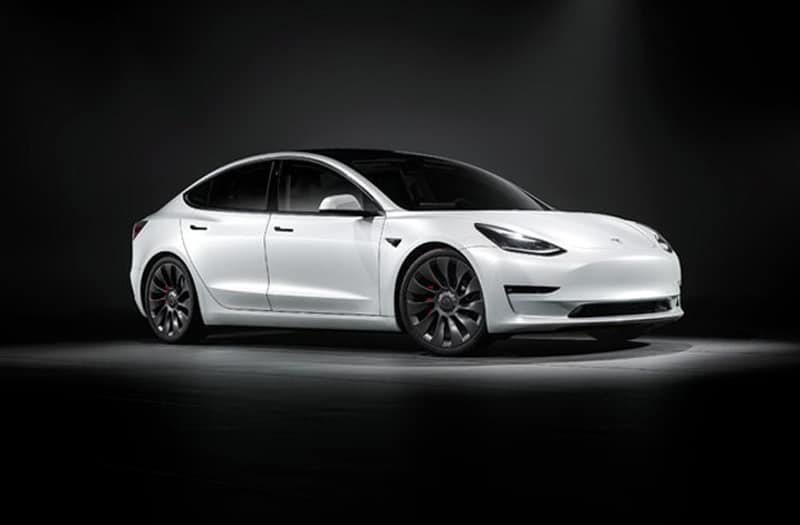
Tesla, the renowned electric vehicle manufacturer, has revolutionized the automotive industry with its cutting-edge technology and commitment to sustainability. Since its inception, Tesla has become a symbol of innovation, pushing the boundaries of what’s possible in the world of transportation. treemusketeers explores the remarkable evolution of Tesla, from its early beginnings to its current position as a global leader in electric vehicles.
Tesla, founded in 2003 by a group of engineers and entrepreneurs, set out with a mission to accelerate the world’s transition to sustainable energy. Led by the visionary entrepreneur Elon Musk, Tesla has disrupted the automotive industry and spearheaded the adoption of electric vehicles on a global scale.
The Vision of Elon Musk
Elon Musk, the co-founder and CEO of Tesla, has been instrumental in shaping the company’s vision and driving its ambitious goals. His vision encompasses not only creating exceptional electric vehicles but also revolutionizing the entire energy ecosystem by integrating renewable energy sources and storage solutions.
Roadster: Pioneering Electric Performance
The Tesla Roadster, introduced in 2008, marked Tesla’s first step towards redefining electric vehicles. With its impressive range and acceleration capabilities, the Roadster shattered the preconceived notions of what electric cars could achieve, showcasing the potential for high-performance electric vehicles.
Model S: Redefining Luxury Electric Cars
The Model S, launched in 2012, revolutionized the luxury car segment. Combining sleek design, cutting-edge technology, and exceptional performance, the Model S demonstrated that electric vehicles could compete with and surpass their gasoline-powered counterparts in terms of both style and performance.
Model X: Blending Utility and Sustainability
In 2015, Tesla introduced the Model X, an all-electric SUV that merged sustainability with utility. The Model X featured groundbreaking falcon-wing doors, advanced safety features, and impressive range, making it a compelling choice for families and adventure enthusiasts alike.
Model 3: Making Electric Vehicles Mainstream
The Model 3, unveiled in 2016, represented Tesla’s bold move towards mass-market electric vehicles. Designed to be more affordable and accessible, the Model 3 aimed to accelerate the transition to sustainable transportation by appealing to a broader consumer base.
Model Y: Embracing the SUV Market
Building on the success of the Model 3, Tesla introduced the Model Y in 2020, catering to the growing demand for compact SUVs. The Model Y inherited the technological advancements of its predecessors while offering increased versatility and a higher seating position, further expanding Tesla’s market reach.
Tesla Energy: Powering the Future
Recognizing the importance of sustainable energy beyond electric vehicles, Tesla expanded its focus todeveloping energy storage solutions. Tesla Energy offers a range of products, including the Powerwall and Powerpack, which enable homes, businesses, and even entire communities to store renewable energy for later use. This integration of renewable energy generation and storage is a crucial step towards achieving a sustainable and decentralized energy infrastructure.
Gigafactories: Scaling Production
To meet the growing demand for its vehicles and energy products, Tesla has established Gigafactories around the world. These state-of-the-art facilities combine advanced manufacturing techniques with renewable energy sources to produce high-quality electric vehicles and energy storage solutions at scale. The Gigafactory network ensures efficient production and helps drive down costs, making Tesla products more accessible to a wider audience.
Autopilot and Full Self-Driving
One of the most significant advancements in Tesla’s vehicles is the Autopilot system. Tesla has been at the forefront of autonomous driving technology, continuously improving its self-driving capabilities through over-the-air software updates. While full self-driving capability is still being developed and regulated, Tesla vehicles equipped with Autopilot offer advanced driver-assistance features, enhancing safety and convenience on the road.
Supercharger Network: Enabling Long-Distance Travel
Tesla’s Supercharger Network is an extensive network of fast-charging stations strategically placed along popular travel routes. This infrastructure enables Tesla owners to embark on long-distance trips with ease, minimizing charging time and providing a seamless experience. The Supercharger Network is a crucial component of Tesla’s commitment to making electric vehicles a practical choice for all types of journeys.
Battery Technology Advancements
Tesla’s relentless focus on battery technology has been key to its success. The company has made significant advancements in battery design, energy density, and production efficiency. By developing its battery cells in-house and exploring new chemistries, Tesla aims to increase range, reduce costs, and accelerate the transition to renewable energy storage on a global scale.
The Impact of Tesla on the Automotive Industry
Tesla’s innovative spirit and groundbreaking achievements have had a profound impact on the automotive industry. The company’s success has prompted traditional automakers to invest heavily in electric vehicle development and infrastructure. Tesla’s influence extends beyond its own products, catalyzing a shift towards sustainable transportation and forcing industry-wide change.
Challenges and Future Prospects
Despite its successes, Tesla faces several challenges. Competition in the electric vehicle market is intensifying, and regulatory hurdles and infrastructure limitations pose ongoing obstacles. However, Tesla’s commitment to continuous innovation, technological advancements, and its dedicated fanbase position the company well for future growth and success.
The Perfect SUV for Every Need: A Comprehensive Guide to Purchasing
Conclusion
Tesla’s evolution from a startup to a global leader in electric vehicles and sustainable energy is a testament to the power of visionary leadership and unwavering commitment to a mission. Through groundbreaking products, technological advancements, and a relentless pursuit of sustainability, Tesla has reshaped the automotive industry and inspired a worldwide transition to a more sustainable future.
FAQs
1. How long has Tesla been in operation?
Tesla was founded in 2003, making it over two decades old.
2. Are Tesla vehicles only for the wealthy?
While Tesla vehicles initially catered to the luxury segment, the introduction of the Model 3 and subsequent models has made Tesla vehicles more accessible to a broader range of consumers.
3. Does Tesla offer charging solutions for homes?
Yes, Tesla offers the Powerwall, a home energy storage solution that allows homeowners to store energy from renewable sources for later use.
4. Are Tesla vehicles completely autonomous?
Tesla vehicles equipped with Autopilot offer advanced driver-assistance features but are not yet fully autonomous. Full self-driving capabilities are still under development and regulatory approval.
5. How does Tesla contribute to sustainability?
Tesla contributes to sustainability by developing and manufacturing electric vehicles that produce zero tailpipe emissions. By transitioning from fossil fuel-powered vehicles to electric vehicles, Tesla helps reduce greenhouse gas emissions and air pollution. Additionally, Tesla’s focus on renewable energy integration, energy storage solutions, and the Supercharger Network promotes the use of clean energy sources and enables long-distance travel without relying on traditional fossil fuels.
